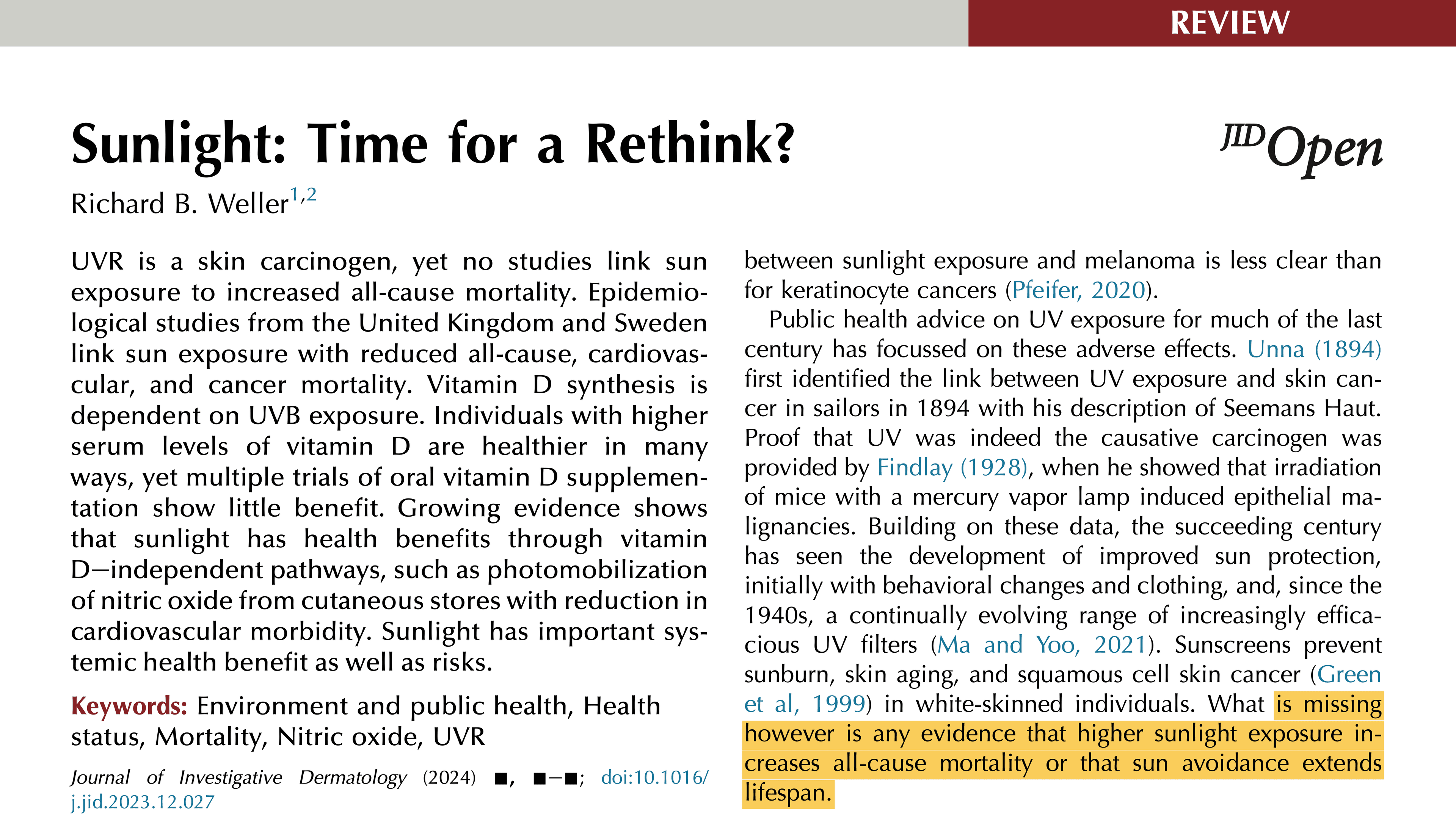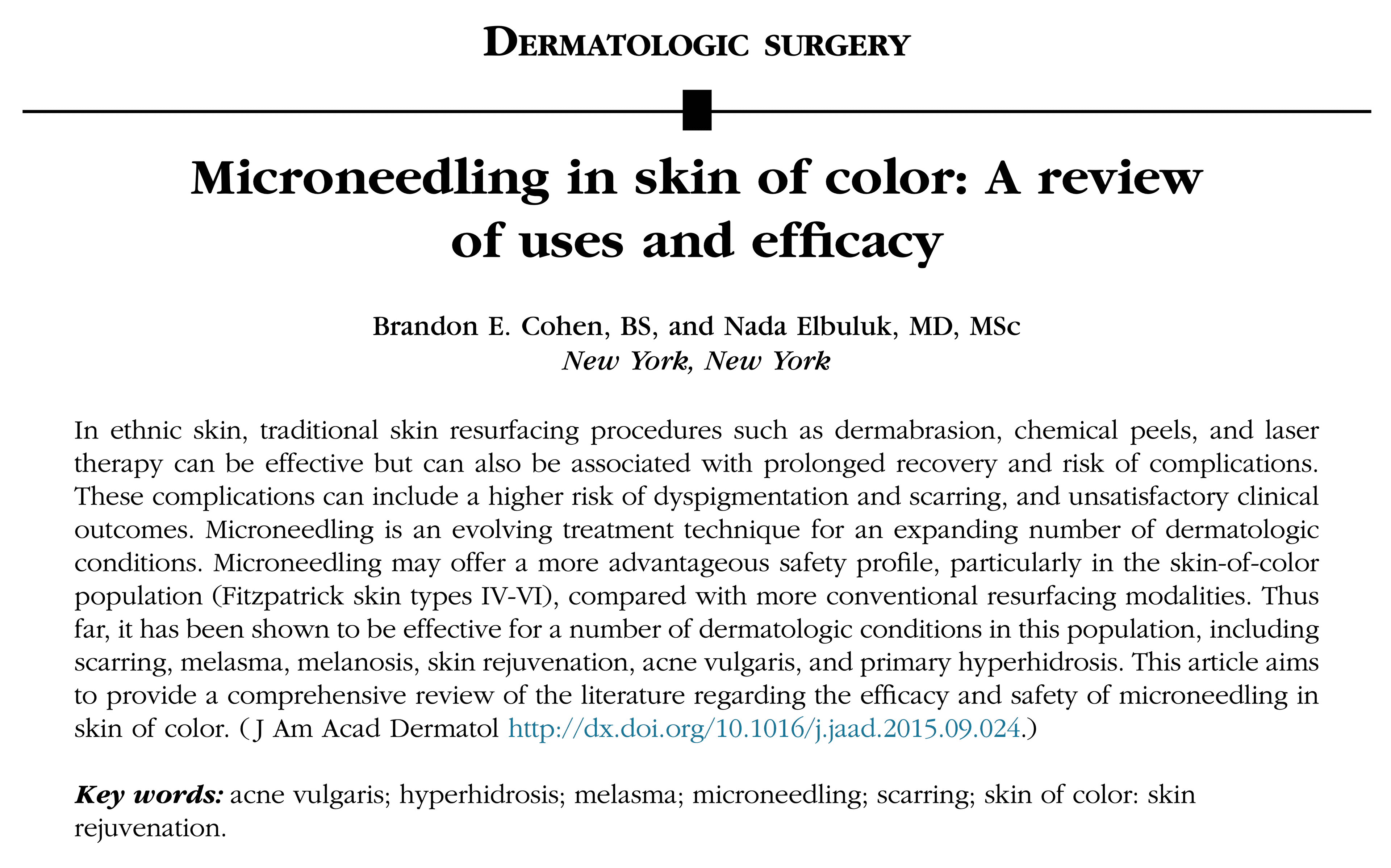Summary: Sunlight, Time for a Rethink
Troels Marstrand, Ph.D.
May 13, 2024


Current sun protection guidelines focus heavily on the risks of sun exposure, such as skin cancer and photoaging. However, a growing body of evidence suggests that these guidelines may be overlooking the significant health benefits of sunlight. In his article "Sunlight: Time for a Rethink?" Richard B. Weller argues that a more balanced approach is needed, taking into account both the risks and benefits of sun exposure.
Mechanism: Nitric Oxide Release from the Skin
One of the key mechanisms through which sunlight exposure benefits health is the release of nitric oxide (NO) from our skin. The skin contains large stores of nitrogen oxides, such as nitrate, nitrite, and S-nitrosothiols. UV radiation, particularly UVA, can mobilize NO from these stores, releasing it into the circulation. This UV-induced NO release leads to arterial dilation and a decrease in blood pressure, independently of vitamin D synthesis. The reduction in blood pressure is more pronounced in individuals with lighter skin compared to those with darker skin, and the effect is greater with UVB exposure than UVA.
The UV energy required to mobilize NO from keratinocytes is below the threshold that causes detectable DNA damage, suggesting that the beneficial effects of NO release can be achieved without increasing the risk of skin cancer. In addition to its impact on blood pressure, NO release from the skin may also play a role in reducing the risk of other cardiovascular diseases, such as ischemic heart disease and stroke.
Evidence of Beneficial Sun Exposure:
1. Epidemiological studies from the UK and Sweden link sun exposure with reduced all-cause, cardiovascular, and cancer mortality. 2. Seasonal variations in blood pressure and cardiovascular mortality suggest a sunlight-related mechanism. 3. Inadequate UV exposure in winter months may contribute to the regular winter rise in all-cause mortality. 4. UV exposure is associated with reduced risk of developing myopia in children. 5. Sunlight exposure has been linked to reduced risk of multiple sclerosis, type 2 diabetes, and COVID-19 severity, independent of vitamin D levels.
Critique of Current Guidelines:
1. Sun protection advice has focused almost exclusively on the adverse effects of UV radiation, failing to consider the systemic health benefits of sunlight. 2. While oral vitamin D supplementation is often recommended to compensate for reduced sun exposure, multiple trials show little benefit, suggesting that sunlight's health benefits extend beyond vitamin D synthesis. 3. Advice to avoid sunlight may contribute to the high rates of vitamin D deficiency, particularly among individuals with darker skin living in low-UV environments. 4. Current guidelines do not adequately account for the role of skin color in determining the biological response to UV radiation.
In conclusion, while sun protection remains important for reducing skin cancer risk, a more nuanced approach is needed that balances the risks and benefits of sun exposure. Future guidelines should consider factors such as skin color, latitude, and seasonal variations in UV levels, as well as the growing evidence of sunlight's systemic health benefits, including the role of NO release from the skin in reducing blood pressure and potentially other cardiovascular risks.
Reference:
Weller, Richard B. "Sunlight: Time for a Rethink?." Journal of Investigative Dermatology (2024).
Read next


